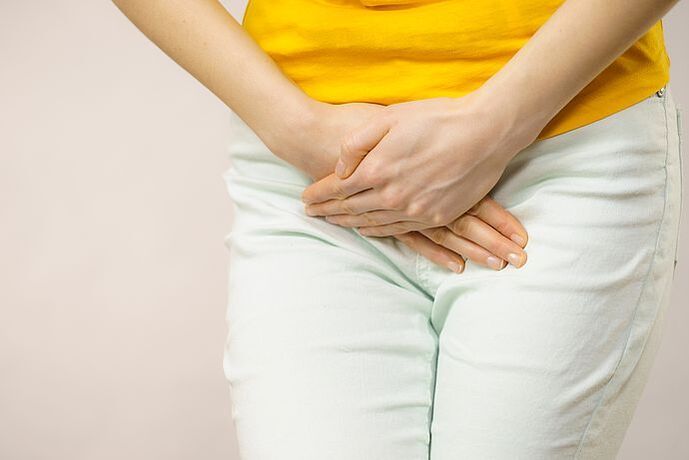
Cystitis is an acute or chronic inflammation of the bladder wall. It manifests itself in frequent and painful urination, the presence of pus in the urine, blood clots, symptoms of poisoning in children, accompanied by fever. The disease is common in people of any age and gender, but it develops more often in women, which is related to the anatomical features of the urinary system.
Symptoms of cystitis
Cystitis is acute and chronic. The acute form is characterized by spontaneous appearance and rapid development. The first symptom is the frequent urge to urinate, every 20-30 minutes. Patients complain of pain in the suprapubic region, the pain spreads to the perineum, genitals, increases with pressure on the abdomen, with slight filling of the bladder. Urination itself is painful, accompanied by a burning sensation and pain, the act ends with the release of a few drops of blood. The color and transparency of urine changes: it looks cloudy, dark, sedimentary, and has an unpleasant smell. With favorable results, the health condition improves for 4-5 days, and the patient recovers in 7-10 days.
Chronic cystitis is characterized by alternating exacerbations and remissions or a continuous slow course. The symptoms correspond to the acute form, their severity increases in the acute stage.
The reasons
Certain conditions are necessary for the development of cystitis: infections, morphological or functional changes in the bladder. In most cases, the disease is contagious. The main causative agents of cystitis are E. coli, epidermal streptococcus, Proteus, Klebsiella, Pseudomonas aeruginosa, enterococci. Microorganisms enter the bladder cavity from the external environment, from the kidney, and less often from other inflammation foci: lymph, blood, through the damaged wall of the bladder.
They create a favorable background for the development of cystitis:
- frequent hypothermia;
- infrequent or incomplete urination;
- weakened immunity;
- sedentary lifestyle;
- wearing clothes that are too tight;
- malnutrition;
- vitamin deficiency;
- physical and psycho-emotional overwork;
- chronic diseases;
- change of sexual partner or initiation of sexual activity;
- surgical interventions in the bladder, prostate;
- non-compliance with hygiene regulations;
- effects of radiation, chemicals and toxic substances on the body;
- treatment with antibiotics and nephrotoxic drugs;
- presence of foreign bodies: urinary drainage tubes, kidney stones, ureteral stents.
Diseases and pathological conditions such as diabetes mellitus, urolithiasis, Huerta's stricture in boys/men, prostate adenoma, prostatitis, dysbacteriosis, intestinal infections, helminthic diseases play a certain role in the development of cystitis.
Types
Cystitis can be classified according to different criteria:
- downstream: acute - characterized by inflammatory changes in the mucosa and submucosa, and chronic - morphological changes affect the muscle layer;
- according to etiology: bacterial (specific and non-specific) and non-bacterial (chemical, medicinal, radiation, allergic);
- in form: primary - occurs without structural and functional changes in the urinary system, secondary - develops in case of bladder dysfunction, anatomical changes;
- according to the prevalence of the inflammatory process: focal (limited) and complete (diffuse).
Diagnostics
In the diagnosis of cystitis, the urologist is assisted by the clinical manifestations, the results of laboratory and instrumental tests. The main role in the recognition, type, and course characteristics of cystitis belongs to the general analysis of the urine, the culture of the urine, and the determination of the acidity of the urine. According to the indications, endoscopic examination of the bladder mucosa (cystoscopy) or X-ray (cystography), survey urography and ultrasound of the bladder are performed.
To confirm/exclude cystitis, the specialists of the CMRT clinics use modern diagnostic methods, such as:
- MRI (magnetic resonance imaging)
- Ultrasound (Ultrasound)
- double-sided scanning
- Computer Topography of Diers Ridge
- Examination (comprehensive examination of the body)
- CT
Which doctor should you see?
The urologist diagnoses and treats the disease. Depending on the causes and symptoms accompanying the disease, it may be necessary to consult a gynecologist and other specialists.
How to treat cystitis
The course of treatment is chosen by a urologist, sometimes in cooperation with an endocrinologist, gynecologist, infectious disease specialist, gastroenterologist, surgeon and other specialists. In the stage of acute cystitis, a dairy-vegetarian diet, restriction of spicy, salty, fatty foods, spices, and thermal procedures in the bladder area are recommended to alleviate dysuric symptoms. In order to quickly cleanse the bladder of toxins, bacteria, and inflammatory components, the drinking regime must be strengthened. In addition to slightly alkaline mineral water, you can drink fruit juices, fruit drinks, compotes, weak green tea.
Among the drugs for the treatment of uncomplicated urinary tracts, uroantiseptics, antibacterial, antimicrobial, and antiviral agents are used, taking into account the type of pathogen. To eliminate pain, relieve muscle spasm, stop the symptoms of inflammation as prescribed, take pain relievers, non-steroidal anti-inflammatory drugs, antispasmodics. In addition to the main treatment, after the signs of the disease subside, medicinal herbs, electrophoresis and magnetotherapy are prescribed.
In the stage of complications, if the disease cannot be cured by conservative therapy, the bladder or the pathologically changed area is surgically removed by resection, laser exposure, and freezing.
Complications
Prerequisites for the development of complications create chronic and secondary forms. Possible adverse effects include:
- sclerotic deformity of the bladder neck;
- anatomical and functional changes in the bladder;
- vesicoureteral reflux (reverse flow of urine from the bladder to the ureter);
- peritonitis;
- pyelonephritis;
- inflammation of the urethral wall.
Prevention of cystitis
The prevention of cystitis contributes to:
- exclusion of hypothermia;
- prevention of physical and psycho-emotional overwork;
- healthy and nutritious food;
- genital hygiene;
- early detection and treatment of infections and accompanying diseases;
- systematic emptying of the bladder;
- strengthening of immunity;
- compliance with the drinking regime.




























